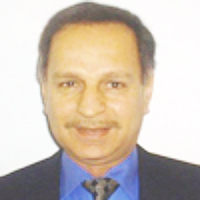A retrospective study for Colorectal Cancer in Vlore, Albania-suggestions for further implications
Published on: 25th February, 2020
OCLC Number/Unique Identifier: 8554448050
Objective: Colorectal cancer is one of the most commonly occurring cancers in men and women worldwide as well as one of the most common causes of death from cancer. It has a higher prevalence in men than women. The treatment of colorectal cancer (surgically or through chemotherapy) severely affects both patients and their families. The objective of the study was to identify cases of colorectal cancer, evaluate their demographic and clinical data, and identify any statistical relationship.
Methods: This is a retrospective study. The data were collected through the revision of cancer patients’ files in the Chemotherapy Center at Vlore Regional Hospital, Vlore, Albania. The analysis included files from 2015-March 2019. A total of 72 patients’ files with colorectal cancer were analyzed.
Result: Mean age of patients 66.36 ± SD10.99 years old, range 38-86. Most of the patients were male (n = 45) and with colon cancer type (n = 44). 19 patients had treatment with surgery, radiation, and chemotherapy. 56.34% of patients with colorectal cancer are still alive. The results of the study are the same as the global trend in terms of age, gender, type of cancer but not in terms of years of survival, which appear lower.
Conclusion: The study suggests that in demographic terms patients with colorectal cancer have no difference from world trend. There was also a marked lack of documentation regarding the clinical data of patients. The complete and accurate documentation of cases with colorectal cancer is recommended to develop quality models of nursing care as well as to design effective promotional and preventive campaigns for colorectal cancer.
Clinical and biological profiles of older adults aged 50 and over compared to those under 50 in people living with HIV attending Kinshasa University Teaching Hospital (DR Congo)
Published on: 28th October, 2021
OCLC Number/Unique Identifier: 9322406717
Background: The survival of people living with HIV (PLWHIVs) is increased and Health systems will have to deal with the early-aging-associated medical conditions.Objective: The objective of this study is to compare the clinical and biological profiles of PLWHIVs aged 50 and over and those aged less than 50 years.Material and methods: This study conducted at Kinshasa University Teaching Hospital (KUTH) covers 6 years. The clinical and biological characteristics of PLWHIVs aged 50 and over were compared with those under 50. Statistical analysis used the means ± SD, the calculation of frequencies, Student’s t-test and Chi-square.Results: PLWHIVs aged 50 or over represented 35.1%. Their average age was 58.0 ± 4.8 years. Women predominate among those under 50 and men among those 50 and over. Married people were more numerous (54% among those under 50). There were more unemployed (50% of PLHIV under 50). Patients 50 years and older were significantly classified as WHO stage 4 with a high frequency of history of tuberculosis, genital herpes, high blood pressure, smoking, vomiting, hepatomegaly, moderate elevation of diastolic blood pressure (DBP) and sytolic blood pressure (SBP), tuberculosis and anemia.Those under 50 had a significantly increased frequency of shingles, hepatitis B-hepatitis C, headaches and more survivals. The mean of Hb, HDL-C, and CD4s+ were significantly lower in patients 50 years and older, and urea, LDL-c, and ALAT levels were significantly higher. Conclusion: The average age was higher from 50 years old. These PLWHIVs were more frequently in WHO stage 4 with more common TB and anemia. Their Hb, HDL-C, and CD4s+ levels were lower while their urea, LDL-C and ALAT levels were significantly elevated.
A Comparative Study of Anatomic and Functional Outcomes of Two Surgical Techniques of Cataract at Lome
Published on: 17th February, 2017
OCLC Number/Unique Identifier: 7317592098
Aim: To compare the anatomical and functional outcomes of cataract surgery with manual small incision cataract surgery (MSICS) to those of extracapsular cataract extraction (ECCE) in Lome.
Patients and Methods: A prospective study involved two groups of patients who underwent ECCE (group 1) and MSICS (group 2) by the same surgeon in the same conditions in different periods. Complications and visual results to the 45th postoperative day were compared.
Results: At the 45th postoperative day, 60% of operated eyes of the ECCE group (G1) and 83.9% in the group of MSICS (G2) had uncorrected visual acuity greater than or equal to 3/10. Through the pinhole, these proportions increased to 73.3% for G1 and 92.2% for G2. Visual acuity was less than 1/10 in 4.4% for G1 and 1.1% for G2. The vitreous loss was observed in proportions of 3.8% for G1 and 3.3% for G2. During follow-up, the three main early postoperative complications were inflammation (13.9%), corneal edema (13.3%), and the pigment dispersion (7.2%) in G1 and corneal edema (9.4%), pigment dispersion (8.3%) and hypertonia (6.6%) in G 2.
Conclusion: Two cataract extraction techniques offer the same level of safety in intraoperative period. However, MSICS has certain advantages over the ECCE and would be an alternative technique in developing countries.
Quality and quantity of bone at intraoral graft donor sites in type 2 diabetic patients versus healthy controls: A cone-beam computed tomography study
Published on: 28th April, 2023
Objectives: This study aimed to compare the quality and quantity of bone at intraoral autogenous graft donor sites in type II diabetes mellitus (DM) patients versus healthy controls using cone-beam computed tomography (CBCT). Materials and methods: This case-control study was conducted on CBCT scans of 50 DM patients and 50 healthy controls between 20-70 years. Maximum height, width, length, and volume of harvestable bone at the symphysis, ramus, palate, and tuberosity were measured bilaterally. The Hounsfield unit (HU) was also calculated to assess bone quality. The two groups were compared regarding the quality and quantity of harvestable bone using an independent t-test. The effect of confounders was analyzed by the regression model (alpha = 0.05). Results: DM patients had significantly lower harvestable bone volume at the symphysis, ramus, and tuberosity than healthy controls (p < 0.001) but this difference was not significant at the palate (p = 0.957). Also, bone quality was significantly lower at the symphysis, ramus, palate, and tuberosity in DM patients (p < 0.001). Conclusion: Diabetic patients had significantly lower bone quality and quantity at intraoral graft donor sites than healthy controls. Mandibular symphysis had higher bone volume and density than ramus, palate, and tuberosity for graft harvesting in diabetic patients.
Single brain metastasis as onset of stage I endometrial carcinoma in patient affected by multiple sclerosis: the first case in literature
Published on: 25th April, 2023
Brain metastases in any gynecological cancer are a rare occurrence. Even more so, it is extremely rare for a gynecological malignancy to manifest itself with symptoms indicative of cerebral involvement. Literature regarding the association between MS and cancer is conflicting. We herein report a rare presentation of single metastasis of endometrial carcinoma in a 59-year-old woman affected by Primary Progressive Multiple Sclerosis (PPMS). A head CT scan was performed, which revealed the presence of an expansive lesion in the left parietal region. After careful assessment, a high-grade endometrial carcinoma was diagnosed and a decision was made to remove both the primary lesion and the brain metastasis in one sitting, through a conjoined surgery session involving neurosurgeons and gynecologists. The postoperative course was free from complications up until a few days after being transferred to a rehabilitation center, where she died following respiratory complications.
Association of HLA-DRB1 Alleles with Rheumatic Fever Among Senegalese Patients
Published on: 20th November, 2023
Background: Acute rheumatic fever (ARF) is a systemic inflammatory disease resulting from an abnormal immune response to group A β-hemolytic streptococci. ARF is a major public health problem in developing countries, particularly in Senegal. The aim of this study was to evaluate the mutation penetrance and genetic diversity of exon 2 of the HLA-DRB1 gene in Senegalese patients with ARF. Results: DNA was extracted from the blood of patients with ARF. Exon 2 of the HLA-DRB1 gene was amplified by polymerase chain reaction and sequenced using the Sanger method. Bioinformatics software and databases (polyphen-2, SIFT and ProVean) were used to assess the pathogenicity of missense mutations. The results revealed a high level of polymorphism in exon 2 of the HLA-DRB1 gene, with 73 non-synonymous mutations between codons 21 and 89, which lie in the hypervariable region encoded by exon 2. Of the 73 variants tested, 44% were pathogenic, indicating their potential involvement in ARF onset. Conclusion: Our results indicate that the HLA-DRB1 mutations involvement in the onset of rheumatic fever.
Peripheral perfusion index in critically ill COVID-19 and its association with multiorgan dysfunction
Published on: 8th May, 2023
Introduction: Severe cases of COVID-19 presented a high incidence of multi-organ dysfunction syndrome (MODS) during their evolution. This was attributed to a theoretical cytokine storm, where microcirculatory disorders would play a fundamental role, causing these patients to present a sepsis-like pattern as observed in sublingual microcirculation studies. The evidence in this regard is controversial. The Peripheral Perfusion Index is a reliable method to continuously and non-invasively assess the microcirculatory bed, which assesses the pulsatile (PPI) component of the plethysmographic pulse curve.Methods: We conducted a prospective observational study to evaluate the behavior of the PPI in patients with severe respiratory failure due to SARS-CoV-2 and its association with SDOM.Results: We evaluated 60 patients with APACHE II 14.6 ± 4.4 and SOFA 4.7 ± 2.1. 55% of the patients presented SDOM. Perfusion monitoring showed IP values of 5.32 ± 1.87 that were associated with normal lactate levels of 1.49 mmol/L (min 0.89/ max 2.20 mmol/L). The PPI values between the living and the dead did not show a significant difference (p = 0.854) or the presence of SDOM.The PPI values between the patients who presented renal failure, hemodynamics, or perfusion disorders were determined by the presence of hyperlactatemia, and for those who did not present these characteristics, no statistical difference was found; neither when stratified by PaFiO2 ratio. Mortality was 55%.Conclusion: In our series of patients with severe pneumonia due to COVID-19, we found high PPI values, which would correspond to a pattern of capillary recruitment, and the associated organ injury could not be substantiated by this phenomenon.
Rapid and sensitive identification of cow and buffalo species and gender in tissue/meat samples impounded from different spots in Delhi NCR India by Real Time PCR
Published on: 12th January, 2022
OCLC Number/Unique Identifier: 9395225158
The objective of this study was to obtain a fast, accurate and reliable method of species identification of unknown biological samples for forensic applications, especially in illegal trade of animals as well as meat fraud. Meat fraud and adulteration not only affects the market but also increases the risk of religious and ethnic conflicts around the world [1]. In this study, species-specific and gender differentiating Real time PCR technique was employed to analyse 15 meat samples collected from a suspected site. Out of 15 samples collected from suspected site, 54% and 13% samples were of Cow and buffalo origin respectively. All 54% cow samples were of male while one each of buffalo were of male and female origin. Two samples were inconclusive. These findings indicated that species and gender-specific PCR is very sensitive and can be used for forensic species identification and the detection of meat fraud and adulteration.
Nanometer-scale distribution of PD-1 in the melanoma tumor microenvironment
Published on: 10th May, 2023
The nanometer-scale spatial organization of immune receptors plays a role in cell activation and suppression. While the connection between this spatial organization and cell signaling events is emerging from cell culture experiments, how these results translate to more physiologically relevant settings like the tumor microenvironment remains poorly understood due to the challenges of high-resolution imaging in vivo. Here we perform super-resolution immunofluorescence microscopy of human melanoma tissue sections to examine the spatial organization of the immune checkpoint inhibitor programmed cell death 1 (PD-1). We show that PD-1 exhibits a variety of organizations ranging from nanometer-scale clusters to more uniform membrane labeling. Our results demonstrate the capability of super-resolution imaging to examine the spatial organization of immune checkpoint markers in the tumor microenvironment, suggesting a future direction for both clinical and immunology research.
Comparative study of continuous method and interrupted method of episiotomy in terms of healing of the surgical wound
Published on: 21st April, 2021
OCLC Number/Unique Identifier: 9023206144
Episiotomy is a most commonly performed minor procedure. There are various type of episiotomy suturing, in this study two most common types of episiotomy suturing techniques were compare in terms of healing rate. This study concluded that the continuous method of episiotomy suturing is although faster, cosmetically better and associated with less post-operative pain but it heals significantly better than interrupted method of suturing.




